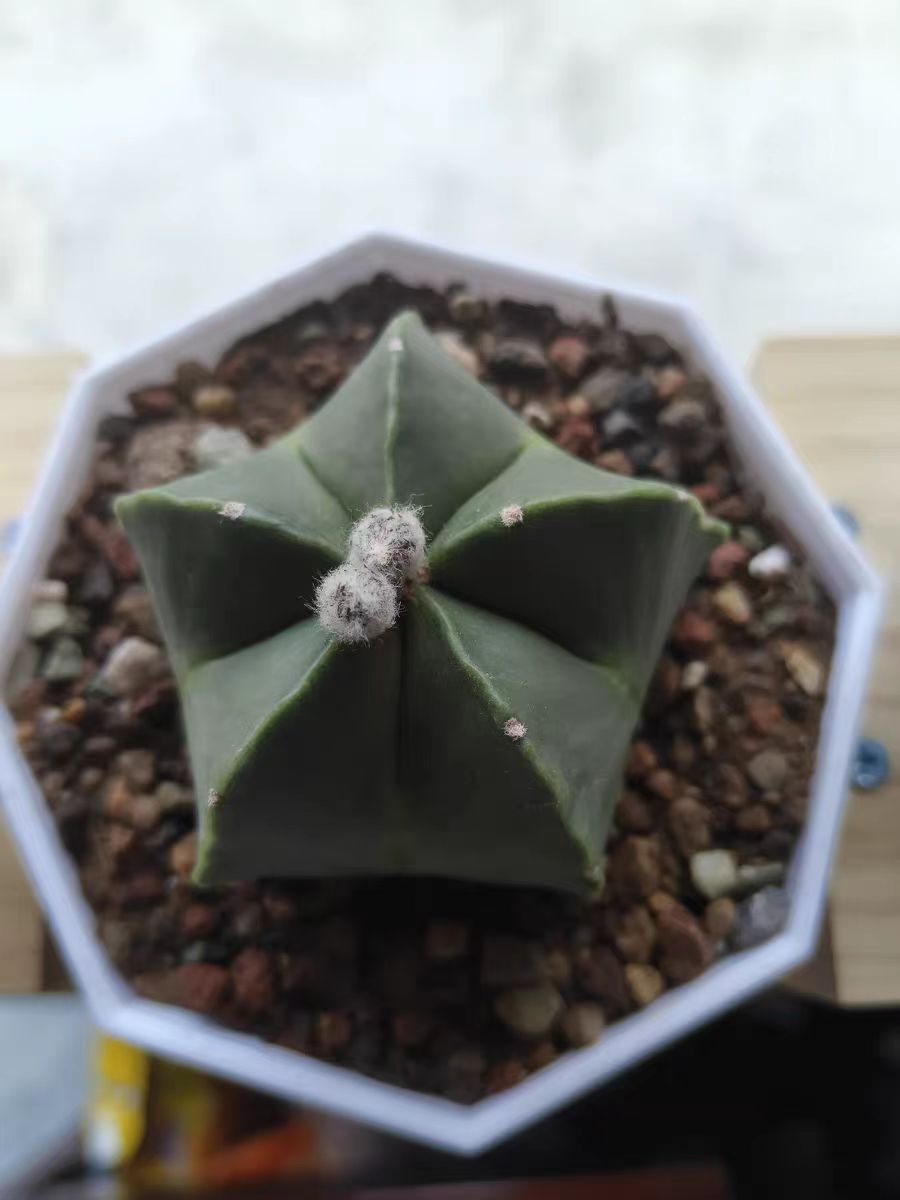Astrophytum myriostigma is a particularly delicate succulent plant. Its round spherical body is adorned with regular rib lines, resembling a small artistic work with inherent geometric beauty, no wonder many gardening enthusiasts love to grow it. However, to raise it well and transform a single plant into a full pot, both selection and maintenance require much attention. Today, let’s discuss how to select healthy Astrophytum myriostigma and how to cultivate it to achieve a bushy growth.
When purchasing Astrophytum myriostigma at a flower market, the first thing to check is its appearance. A healthy specimen should have a symmetrical and round sphere, like a standard geometric shape, without any 歪斜 (crookedness) or flatness. For example, the common five-ribbed Astrophytum myriostigma should have five evenly distributed rib surfaces with smooth lines, which is visually pleasing. In terms of color, different varieties have different hues, but for any variety, a healthy plant should have a uniform and glossy color, as if coated with a natural wax finish. If the sphere appears grayish, yellowish, or has spots, it may be poorly maintained or diseased, and such plants should be avoided.
Next, examine the epidermis closely. A healthy Astrophytum myriostigma has a smooth epidermis, like a child’s skin, without damage, spots, or wrinkles. If there are wounds, strange spots, or even wrinkled areas on the epidermis, it indicates that the plant may be dehydrated or damaged by pests, which can lead to problems after purchase. Additionally, check its areoles (the small spots where spines grow) and fuzz. The areoles should be neatly arranged without damage, and the fuzz should be clean and white, without clumping or shedding, which indicates a clean growing environment with minimal stress. Each variety of Astrophytum myriostigma has its own "characteristics." For example, a five-ribbed variety should have five ribs, and the tubercles (small bumps) on each rib should be plump and uniform. If the tubercles are shriveled or the number is incorrect, the variety may be impure or the plant may be poorly grown.
After inspecting the surface, check the roots and growth point. Gently pull out the plant—healthy roots should be white, tender, and fibrous, with a thick main root. Avoid plants with blackened, rotting, or dry roots, as they are difficult to survive after planting. The growth point is at the top of the sphere, where new leaves and lateral buds emerge. It should be green and plump. If it is discolored, shriveled, or damaged, the plant’s growth capacity will be affected, and it will be less likely to produce new branches in the future.
Once a healthy seedling is selected, maintenance becomes crucial. First, provide it with a suitable "home." Astrophytum myriostigma loves sunlight. Except for shading during the intense summer sun, place it in a sunny location for at least 6 hours daily to ensure robust growth and facilitate lateral bud development. Pay attention to temperature: 15–25°C is ideal. Avoid temperatures below 5°C in winter or above 35°C in summer, as the plant will enter a "dormant" state and stop growing.
For soil, Astrophytum myriostigma prefers loose, breathable, and well-draining "sandy soil" rather than sticky soil. You can prepare a mix of 60–70% granular soil (such as volcanic stone, vermiculite, perlite) and 30–40% peat moss, which ensures aeration to prevent root rot while providing some nutrients.
Fertilization also requires care. During the growing seasons of spring and autumn, apply a dilute succulent-specific fertilizer once a month, like a "nutritional supplement," but ensure the fertilizer does not directly contact the plant to avoid root burning. Watering should follow the "thoroughly dry, thoroughly wet" principle: water only when the soil is completely dry, and water until it drains from the bottom of the pot. Never water partially or leave standing water, as this can cause root rot. Water less in summer and winter, keeping the soil slightly dry.
To promote rapid bushy growth, try propagation methods. If you have seeds, sow them in spring or autumn in moist soil at 20–25°C—germination usually occurs in 1–2 weeks, though seedlings grow slowly and require patience. If lateral buds emerge beside the mother plant, gently break them off, let the wounds dry, and plant them in new soil to quickly grow into new plants—a simple and efficient method. Grafting is another option: grafting Astrophytum myriostigma onto rootstocks like Hylocereus can accelerate growth and promote more lateral buds.
In fact, growing Astrophytum myriostigma is not difficult. As long as you choose carefully, pay attention to maintenance, provide appropriate light, temperature, and soil, and use propagation techniques, you will gradually see it grow into a bushy cluster. Witnessing a single plant transform into a "small colony" brings a great sense of achievement! Give it a try—maybe you’ll be the next to successfully grow a bushy Astrophytum myriostigma!
How to Select Astrophytum myriostigma Succulents?

Share with
Tagged in :




Leave a Reply